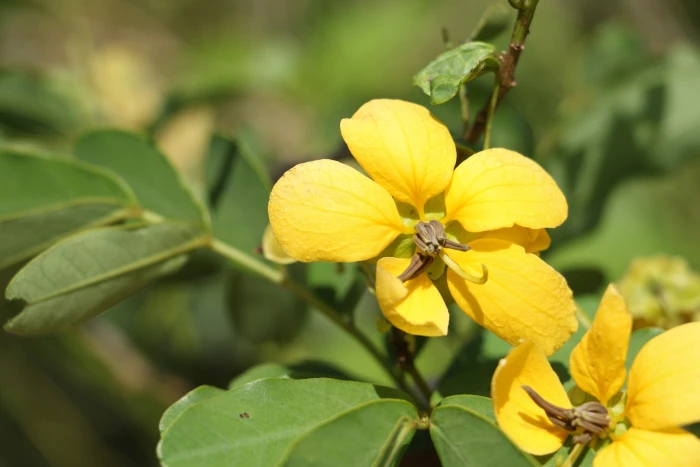Kolomana
(Senna gaudichaudii)
Kolomana (Senna gaudichaudii)
/
/

© Greg Tasney
CC BY-SA 4.0
Image By:
© Greg Tasney
Recorded By:
Copyright:
CC BY-SA 4.0
Copyright Notice:
Photo by: © Greg Tasney | License Type: CC BY-SA 4.0 | License URL: http://creativecommons.org/licenses/by-sa/4.0/ | Uploader: gregtasney | Publisher: iNaturalist |
























Estimated Native Range
Climate Requirements for Sicklerville, New Jersey
| This Plant | Your Site | Plant Suitability for Your Location | ||
|---|---|---|---|---|
| • Precipitation | 16" - 186" | 45" | Aquatic | Aquatic |
| • High Temp. | 71°F - 102°F | 86°F | Your summer temperatures are normal for this plant. | Excellent |
| • Low Temp. | 38°F - 73°F | 23°F | Your winter temperatures may be too cold for this plant | Too cold |
This plant may not grow well at your location - your precipitation is too high.
Summary
Senna gaudichaudii, commonly known as kolomana or blunt-leaved senna, is a shrub or small tree that is part of the legume family and is native to various Pacific Islands and Queensland, Australia. It typically grows to a height of up to 9 feet 10 inches and features pinnate leaves that are arranged alternately along the stems. The yellow flowers are small but showy, blooming in clusters and attracting pollinators such as bees and butterflies. Flowering occurs throughout the year in its native range, with peaks often corresponding to the local wet season.
Kolomana is valued for its ornamental yellow flowers and its ability to thrive in challenging conditions. It is often used in tropical and subtropical gardens for informal hedges, screen plantings, or as a specimen shrub. This species prefers well-drained soils and can tolerate a range of soil types, from sandy to loamy. It is drought-tolerant once established and requires minimal maintenance, making it suitable for xeriscaping. While it prefers full sun, it can also grow in part shade. Gardeners should be aware that Senna species can be hosts for caterpillars of certain butterfly species, which can defoliate plants but also support biodiversity.CC BY-SA 4.0
Kolomana is valued for its ornamental yellow flowers and its ability to thrive in challenging conditions. It is often used in tropical and subtropical gardens for informal hedges, screen plantings, or as a specimen shrub. This species prefers well-drained soils and can tolerate a range of soil types, from sandy to loamy. It is drought-tolerant once established and requires minimal maintenance, making it suitable for xeriscaping. While it prefers full sun, it can also grow in part shade. Gardeners should be aware that Senna species can be hosts for caterpillars of certain butterfly species, which can defoliate plants but also support biodiversity.CC BY-SA 4.0
Plant Description
- Plant Type: Shrub
- Height: 3-6 feet
- Width: 6-10 feet
- Growth Rate: Moderate
- Flower Color: White, Yellow
- Flowering Season: Spring, Summer
- Leaf Retention: Deciduous
Growth Requirements
- Sun: Full Sun, Part Shade
- Water: Medium, High
- Drainage: Medium, Fast
Common Uses
Bird Garden, Drought Tolerant, Erosion Control, Low Maintenance
Natural Habitat
native to various Pacific Islands and Queensland, Australia
Other Names
Common Names: Groundcover Cassia, Groundcover Senna, Climbing Cassia, Beach Senna, Bush Senna
Scientific Names: Senna gaudichaudii, Cassia deplanchei, Cassia gaudichaudii, Cassia glandulifera, Cassia glanduligera, Cassia glauca, Cassia horsfieldii, Cassia retusa, Cassia retusa
GBIF Accepted Name: Senna gaudichaudii